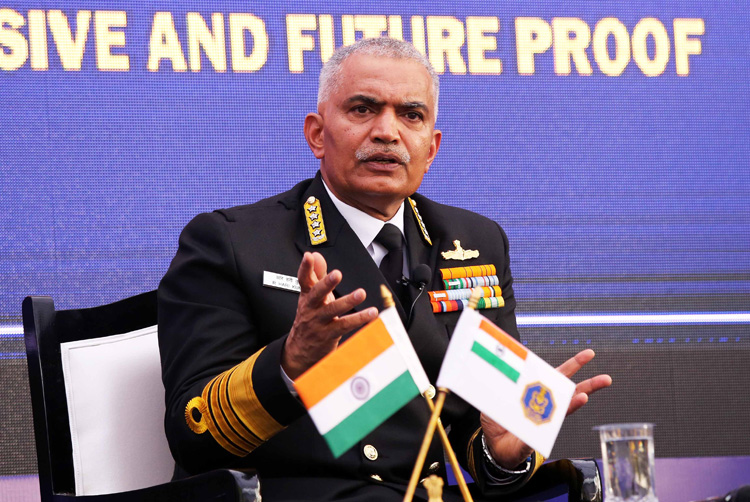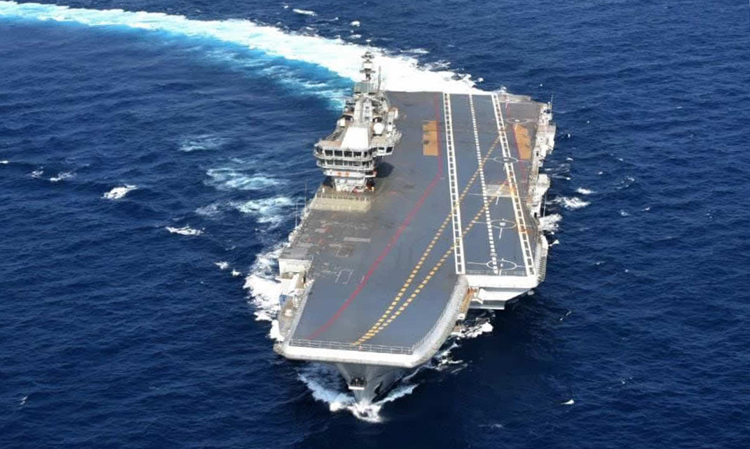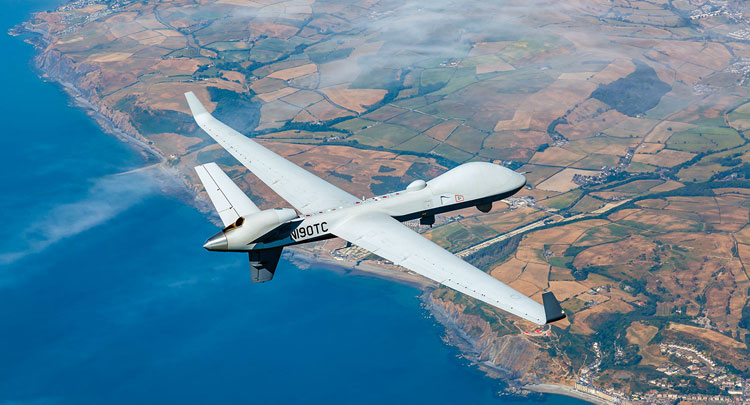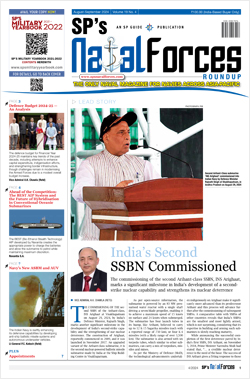INDIAN ARMED FORCES CHIEFS ON OUR RELENTLESS AND FOCUSED PUBLISHING EFFORTS

SP Guide Publications puts forth a well compiled articulation of issues, pursuits and accomplishments of the Indian Army, over the years

"Over the past 60 years, the growth of SP Guide Publications has mirrored the rising stature of Indian Navy. Its well-researched and informative magazines on Defence and Aerospace sector have served to shape an educated opinion of our military personnel, policy makers and the public alike. I wish SP's Publication team continued success, fair winds and following seas in all future endeavour!"

Since, its inception in 1964, SP Guide Publications has consistently demonstrated commitment to high-quality journalism in the aerospace and defence sectors, earning a well-deserved reputation as Asia's largest media house in this domain. I wish SP Guide Publications continued success in its pursuit of excellence.
Navy to be fully self-reliant by 2047
The Indian Navy has made an unequivocal commitment to be fully 'Atmanirbhar' by 2047 when India will be celebrating 100th year of independence

The Indian Navy, which saw the induction of indigenously built Aircraft Carrier Vikrant, this year, placing India in the select league of nations, designing and building a warship of the size of 45,000 tonnes, has made India proud. The Indian Navy which has pioneered indigenisation in Indian armed forces is now committed to make the country fully self-reliant by the year 2047 when India will be celebrating 100th year of independence. This policy decision will be a big push to the Indian shipyards, whose order books are already running to overcapacity. Though India presently lacks the indigenous design and build capacity of diesel submarines, the Indian naval designers have the potential to do so, as aptly shown to the world, the capability to manufacture nuclear powered submarine Arihant indigenously.
"Maintaining credible deterrence, while remaining ready to go into harm's way to protect, preserve and promote our national interests will remain our principal priority" —Admiral R. Hari Kumar, Chief of the Naval Staff
Encouraged by this capability in acquiring such indigenous cutting edge technological warship, Chief of the Naval Staff Admiral R. Hari Kumar made this solemn pledge before the media on the occasion of the Navy day, celebrated to commemorate Indian Navy's valiant actions in the 1971 war, contributing to India's historic victory over Pakistan. Continuing with this tradition of offensive action, Admiral Hari Kumar now promises Indian Navy to be forever combat ready, Credible, cohesive and future proof force.
In the words of the CNS, "Vikrant, for the foreseeable future, will remain a shining symbol of aspirational India and will contribute to enhance India's global stature, proudly flying our Tiranga (India's tri-colour flag) across the far reaches of the world's oceans."

Indirectly conveying a message to rival maritime forces, the Navy Chief said, "First and foremost, maintaining credible deterrence, while remaining ready to go into harm's way to protect, preserve and promote our national interests will remain our principal priority. Our vision of being a combat ready, cohesive and future-proof force underpins this aspect."
"As recent global events have amply underscored, this vision cannot be met in letter and spirit if we remain dependent on others for our security needs. To that end, the government has clearly spelt out the need for Atmanirbharta (Self reliance). The Indian Navy, on our part, has made an unequivocal commitment to be fully Atmanirbhar by 2047."
The Navy plans to have unmanned, and autonomous capabilities in future – be it in air, over surface or underwater
Explaining the rationale of Atmanirbharta, Admiral Hari Kumar said, "the rapid pace of advancement of technology - spanning a wide array of sectors - impose the inescapable need for us to not only catch up with the developments, but to go above and beyond them. We will passionately pursue and adopt niche and disruptive technologies. Towards this end, we will follow SPRINT or Supporting Pole Vaulting in R&D through iDEX, NIO and TDAC approach. The aim is to selflessly meld the elements of "Innovation, Indigenisation and Self reliance".
In this respect the Naval Chief declared that the Navy plans to have unmanned, and autonomous capabilities in future - be it in air, over surface or underwater. This will significantly augment the Indian Navy's capability to help tackle the threats in Indian waters more precisely and effectively.

The Navy Chief said that combat readiness of the forces and budgetary provisions are now increasingly being looked at jointly by the three Services. The Navy Chief committed Indian Navy to jointness and increased synergy and collective efforts. As India grows, it's maritime interests and investments will also expand proportionately which in turn will mandate expansion in the Indian Navy's responsibilities and operational footprint to protect these interests. In furthering and strengthening these vital goals, the Indian Navy will remain diligent in pursuit of building bonds of friendship and operational cohesion with like minded nations across the Indo-Pacific and beyond.
Acknowledging the financial constraints of the government, Admiral Hari Kumar said that budget always has to be balanced between a host of national imperatives - security, development, social etc. Expressing satisfaction over the provision of 17.8 per cent of the total defence budget, Admiral Hari Kumar said, "The Indian Navy will continue to focus on making every valuable rupee count towards enhancing our combat readiness."
National Domain Awareness Project (NMDA)
Answering a query, the Naval Chief said that government has approved a major National Domain Awareness Project (NMDA). This is essential to keep round the clock vigil on maritime activities of inimical forces. The Naval Chief revealed that presently the Indian Navy keeps close watch on Chinese surveillance and fishing ships. "There are a lot of Chinese ships which operate in the Indian Ocean Region. As a resident maritime power, we keep a close watch on them. Our job is to ensure that India's maritime interests are protected," said Admiral Hari Kumar. Naval officers say that in the guise of fishing vessels, China keeps an eye on the movements of warships in the Indian Ocean. To further augment the surveillance capability the government has okayed the NMDA project which will be an integrated intelligence grid to detect and thwart threats emanating from sea in real time.
Navy Chief revealed that procurement decision to acquire armed MQ-9B Predator (Sea Guardian Drones) from the U.S. is under process
In response to a question, the Naval Chief also revealed that procurement decision to acquire armed MQ-9B Predator (Sea Guardian Drones) from the US is under process. This unmanned system is reported to be very expensive, around $3 billion for 30 drones. Hence government was taking long to decide, However, in view of the urgent requirement, government seems to be reconsidering. As Admiral Hari Kumar said, "we are discussing whether the numbers (10 drones each for Navy, Air Force and Army) need to be rationalised."





